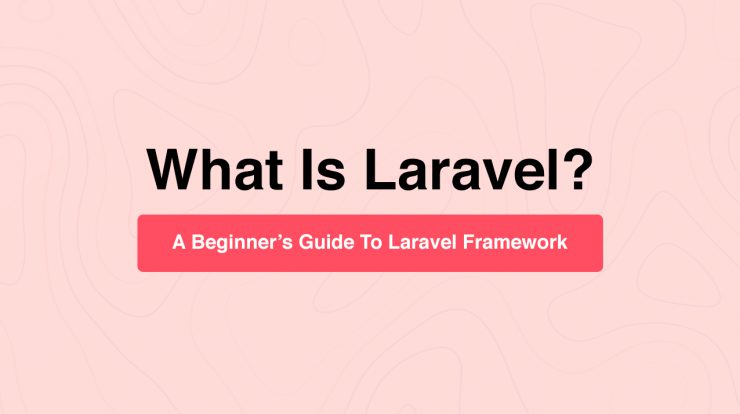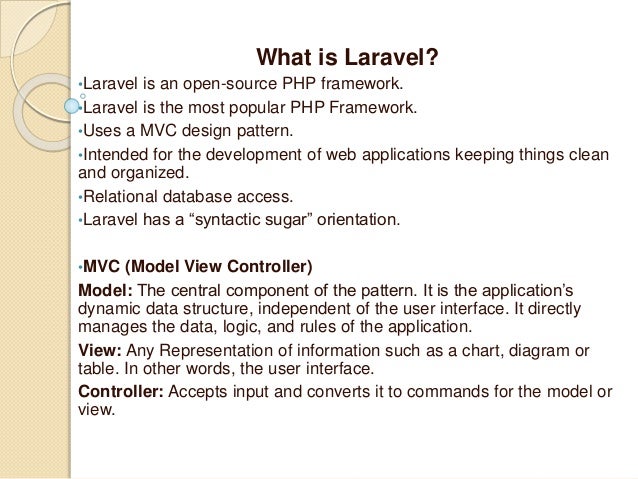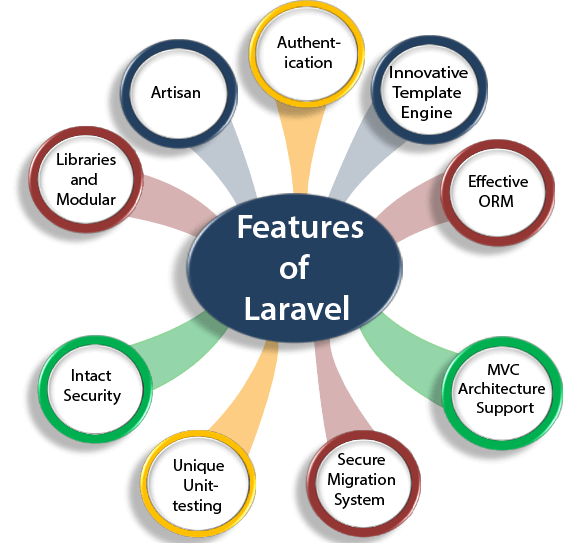
In this Tutorial we are going to learn about Laravel. But most importantly you have to know about PHP first. If you don’t know about PHP and what is PHP then go to this link and learn about PHP first Click Here. I have already mentioned that in this tutorial I am going to explaining about Laravel and its intro and many things. first o all let’s start this with the first Question which generally comes in mind of every person who heard this word “What is Laravel?”.
What is Laravel?

A PHP framework that provides tools and resources for developing contemporary apps in PHP, Laravel delivers a free and open-source environment. Laravel has seen its popularity increase quickly in the last few years as a result of a comprehensive ecosystem that uses its built-in capabilities and a wide selection of compatible packages and extensions.
Laravel includes strong database capabilities, including Eloquent (ORM) and included methods to create migration and seeders from database. With the Artisan control line tool, developers will be able to bootstrap new models, controllers and other components to accelerate the overall development of an application.
What Is Laravel Used for?

Laravel is used largely for the creation of customized PHP web applications. It is a web frame that handles many aspects, including routing and HTML templates, and authentications, that are annoying to construct you.
Due to its operating on the server, Laravel concentrates on data handling and keeping to a model view controller design. Laravel is fully server side. A framework like React may focus mostly on user interaction and flashy functionality, but Laravel provides you with a strong basis for it – and it works well.
How Does Laravel Work?
Model View Controller, or MVC is a design pattern for Laravel. The “model” represents the form of information on which your program works. This is your model if you have a user table, each having a list of posts it’s produced. This model is interacted by the “Controller.” If a person asks for a page view, the controller will speak to the model (usually only the database) and find out the information. The controller changes the model if the user wishes to create a new post. The controller includes much of the application logic.

This structure is used by Laravel to power bespoke applications. It employs the Blade templating motor to break the HTML in parts and operate the control unit. It all begins with routes established by web.php that process HTTP requests on the basis of the requested location. For example, suppose a user is asked to perform the following function

Route::get('/greeting', function () {
return view('greeting', ['name' => 'James']);
});Why Laravel is important?

There are many things which comes under Laravel. But most importantly we have to know that why Laravel is important. Here are the following points which shows the Why Laravel is Important:-
- A dependency-management-enabled modular packaging solution. This means you can quickly add new features to your Laravel application without having to start from scratch. You may either develop your own packages for code you frequently use or use Composer to install ready-to-use packages.
- Object-relational mapping is a kind of object-relational mapping. For faster data access and manipulation, Laravel’s Eloquent ORM displays database tables as classes.
- A command-line interface (CLI) containing a large number of pre-programmed commands (Artisan).
- Testing is carried out automatically. Laravel has automated testing as a standard feature.
- A virtual programming environment that is portable. Homestead gives developers all of the tools they need to get started with Laravel right away.
- Laravel is a fully functional authentication system.
What are the Advantages of Laravel?

- Laravel is Very Secure:- You may be confident in the security of your web application if you use Laravel since it guarantees comprehensive protection. It efficiently protects your web application from threats that might cause it to fail. Because Laravel is a middle-of-the-road application. It allows users to access information and applications. This makes it extremely safe.
- Quicker Web Application:- Because it is easy to integrate with the tools, Laravel promises quicker web projects. This means it supports all of the main backend caches, allowing Laravel to deliver a quicker application.
- Simplified Construction, Authentication and Authorization:- The authentication of web apps is a straightforward procedure. Laravel also guarantees a simple and rapid authorization procedure. There is also complete control over the level of access given to users. Laravel PHP is a popular choice among developers because of all of these advantages.
- Testing Work Made Easier:- The Laravel framework has full testing support. As a consequence, the program will be able to promote users’ behavior quickly and easily. Finally, there’s the convenience of delivering requests through apps or controlling various types of outputs using applications.
- Routing Configuration Made Automatic:- When it comes to defining routes, the Laravel framework provides very straightforward and expressive ways. Because all of these Laravel routes are defined in the PHP files as app/HTTP/routes, the routes load immediately at the start of the framework, which speeds up the process.
- Prior Mail Service Integration:- SwiftMailern is a popular package with a concise API provided by Laravel. Along with APIs, the Laravel framework includes a number of additional drivers, such as SparPost, Amazon SES, Mailgun, and Mandrill. It is quite simple for users to send emails using the cloud-based server employing these.
- Configuration Handling Using Integrated Library:- You may use Laravel to access a massive library of miscalculation and exception handling. A variety of important log handlers are supported by the monologue logging library.
What are the features of Laravel?

Laravel has the following major characteristics that make it an excellent choice for web application development.
- Modularity:- Laravel comes with 20 built-in libraries and modules to help you improve your application. Every module has a Composer dependency management built in, which makes updating a breeze.
- Testability:- Laravel has a number of tools and utilities that aid in the testing of various test scenarios. This functionality aids in keeping the code up to date and in compliance with the regulations.
- Routing:- Laravel gives the user a lot of flexibility when it comes to defining routes in a web project. Routing makes it easier to grow and improve the performance of the application.
- Configuration Management:- A Laravel-based web application will function in a variety of settings, requiring continuous configuration changes. Laravel has a standardized approach to handling settings.
- Query Builder and ORM:- Laravel has a query builder that allows you to query databases using simple chain methods. Eloquent is an Object Relational Mapper (ORM) and ActiveRecord implementation.
- Schema Builder:- The database definitions and structure are kept in PHP code using chema Builder. It also keeps track of changes made to databases during migrations.
- Template Engine:- The Blade Template engine is used by Laravel to create hierarchical blocks and layouts with preset blocks that incorporate dynamic information.
- E-mail:- Laravel comprises a mail class that enables to send emails with rich content and web app attachments.
- Authentication:- User authentication in the Web applications is a frequent feature. It makes authentication easy since it has functionalities such as registration, forgotten password and sends password recalls.
- Redis:- In the current session and overall cache Laravel uses Redis. Redis interacts directly with sessions.
- Queues:- Laravel includes queue services such as large-scale email or a Cron task. These queues make it simpler to execute tasks without waiting to complete the preceding job.
- Event and Command Bus:- Laravel 5.1 contains Command Bus that enables commands and transmissions to be executed simply. The Laravel commands function according to the lifetime of the application.
Email- contact@devopsschool.com

 Starting: 1st of Every Month
Starting: 1st of Every Month  +91 8409492687
+91 8409492687  Contact@DevOpsSchool.com
Contact@DevOpsSchool.com
